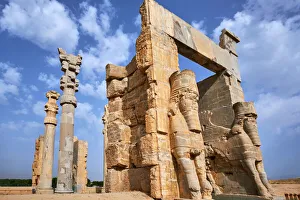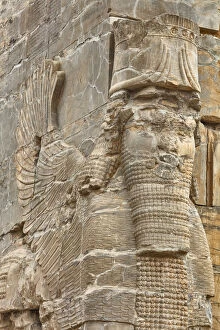Gate Of All Nations Collection
The Gate of All Nations, also known as the Gate of Xerxes, is a magnificent structure located in Persepolis, Iran
All Professionally Made to Order for Quick Shipping
The Gate of All Nations, also known as the Gate of Xerxes, is a magnificent structure located in Persepolis, Iran. Situated in the Fars Province, this Achaemenid archaeological site holds great historical significance. Built during the 1840s-60s by Luigi Pesce, an Italian photographer and archaeologist, this gate stands as a testament to the grandeur of the Achaemenid Empire. Its Propylon design showcases intricate carvings and architectural brilliance that have captivated visitors for centuries. Luigi Pesce's photographs from 1858 offer a glimpse into the past, revealing how this ancient gateway looked over a century ago. The Gate of All Nations has withstood the test of time and remains an iconic symbol of Persian history. Designated as a UNESCO World Heritage Site, Persepolis attracts tourists from all corners of the globe. As you enter through this majestic entranceway, you are transported back to an era when Persia was at its zenith. Today, visitors can witness an overview of All Nations Gate while tourist groups set off on their tours around Persepolis. The gate serves as a starting point for exploration within this vast archaeological complex. Known alternatively as "Gate of All-Lands, " it represents not only Iran but also signifies unity among different nations that once paid homage to Persia's ceremonial capital during its heyday under Achaemenid rule. As you stand before this awe-inspiring structure in Fars Province, surrounded by Islamic influences and embraced by Middle Eastern culture; one cannot help but feel humbled by its sheer magnificence. The Gate of All Nations at Persepolis continues to be a beacon attracting history enthusiasts and curious travelers alike. It stands tall as both a reminder and celebration of Iran's rich heritage - forever etched into our collective memory.










